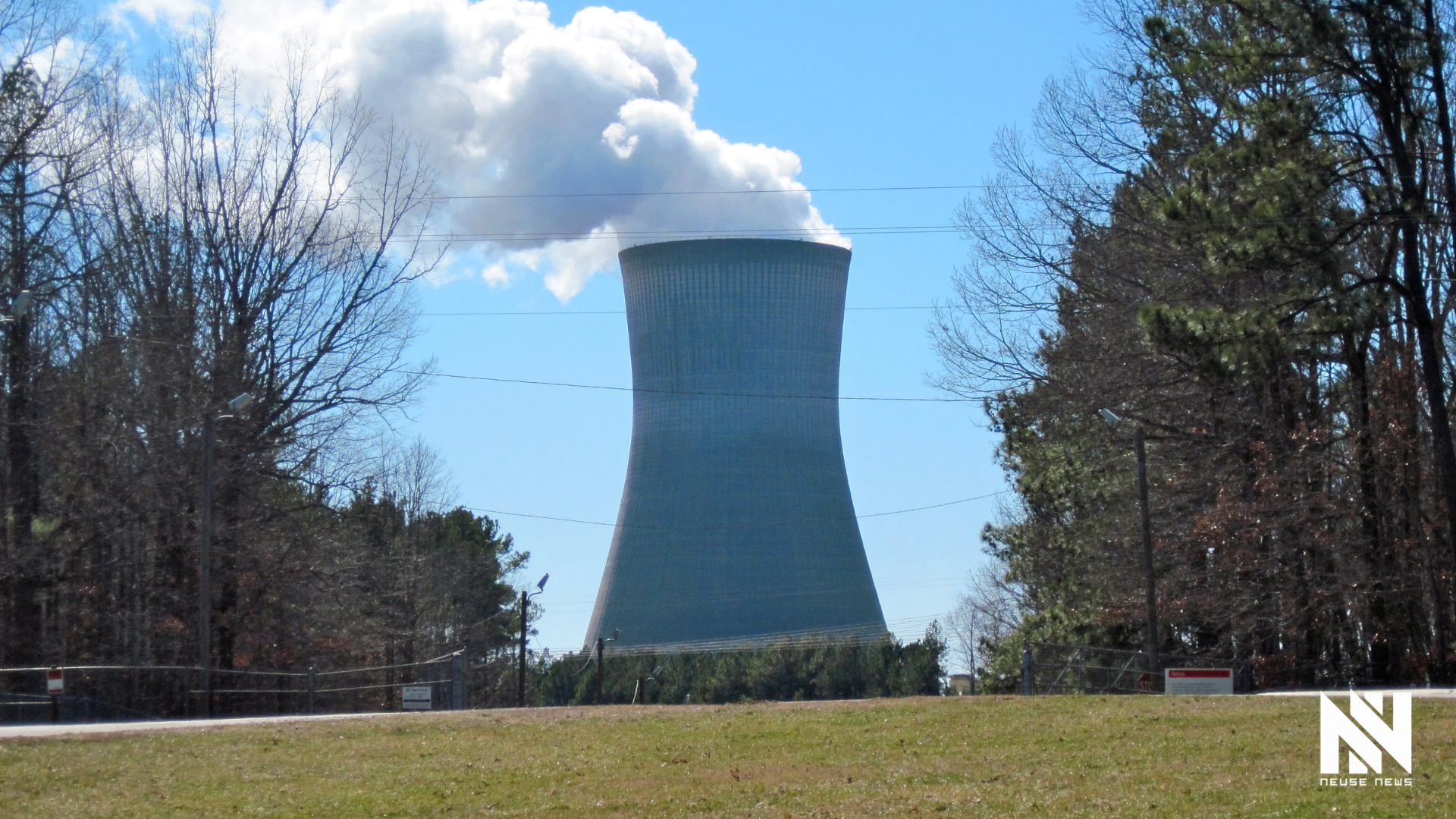Kinston, La Grange and other cities pay off electric debt, future rate impacts uncertain
Photo: Shearon Harris Nuclear Plant in 2010, Credit: John Dyer, Flickr
A debt that has weighed on Kinston, La Grange and 30 other eastern North Carolina communities for more than four decades has finally been retired.
The North Carolina Eastern Municipal Power Agency (NCEMPA) first issued $3.2 billion in debt in 1982 to buy ownership stakes in power plants, securing long-term electricity for its member cities. That decision gave towns like Kinston more control over power supply, but it also left them with some of the highest electric rates in North Carolina.
Background
By the mid-1970s, eastern North Carolina’s cities, including Kinston, were growing uneasy about depending entirely on Carolina Power & Light for electricity. Wholesale rates had surged more than fivefold between 1970 and 1982, and the energy crisis was front-page news with oil embargoes, price spikes, and gas lines stretching for blocks. Local officials wanted more control and stability.
In response, the General Assembly approved legislation and amended the state constitution to let municipalities jointly finance and own power plants. By 1978, 32 eastern cities formally organized NCEMPA to secure a reliable supply of electricity.
The timing, however, could not have been worse. In 1979, the accident at Three Mile Island fueled national concern over nuclear safety. According to accounts from the period, including coverage in the New York Times and legislative reports collected in a historical overview of NCEMPA, wholesale power rates rose more than 500 percent between 1970 and 1982, and new federal regulations sent nuclear construction costs soaring, especially for projects like Shearon Harris that NCEMPA had bought into.
What began as a strategy to protect communities from energy shortages quickly turned into decades of heavy debt, and residents of Kinston, La Grange and other member towns felt the burden in every electric bill.
In July 2015, NCEMPA sold its generating assets to Duke Energy Progress, reducing the outstanding debt to $421.3 million. Member cities paid down the balance over the next decade. In July 2025, NCEMPA made its final debt service payment, officially closing the books on the 43-year obligation.
Local Leaders React
“The debt was always owed by NCEMPA, not the City of Kinston directly,” City Manager Rhonda Barwick explained. “Kinston, as one of 32 members, benefited from the sale in 2015, which allowed the agency to significantly reduce what was still owed. The remaining debt has now been fully retired.”
Mayor Don Hardy said the milestone creates room to plan ahead.
“This accomplishment brings a renewed opportunity for cities like ours,” Hardy said. “Despite not implementing a rate increase in the past 16 years, Kinston has navigated multiple wholesale rate adjustments and cost escalations during that period. We have maintained stable customer rates through proactive long-range financial planning, including the consistent development of both our Rate Stabilization Fund and the Capital Reserve Fund.”
In La Grange, Town Manager Shawn Condon called the debt retirement “a major milestone.” For decades, he said, residents paid higher bills than neighboring Duke Energy customers because the debt was built into local rates.
“That debt became a baked-in part of the monthly electric bill, and we had little choice but to absorb it,” Condon said.
Now, he said, La Grange has “a level of flexibility and opportunity we haven’t had in years. Paying off this debt opens the door to real, long-term savings. It positions La Grange to be more competitive, financially stable, and better able to respond to the needs of our residents.”
Local Residential Electric Rates Comparison
Even with NCEMPA’s long history of debt, Kinston and La Grange’s current residential electric rates are competitive with surrounding providers.
As of August 2025, Kinston charges a minimum bill of $13.40 with an energy rate of 11.755¢ per kilowatt-hour (kWh). For in-town residents of La Grange, the minimum bill charge is $11.23. The kWh usage rate is 0.12¢ for 0-800 kWh and 0.11¢ for kWh usage of 801+.
By comparison:
Duke Energy Progress: $14 minimum, 12.119¢ per kWh
Tri-County Electric: $30.53 minimum, 11.182¢ per kWh
Jones-Onslow EMC (JOEMC): $28 minimum, 12.1¢ per kWh
What Comes Next
With the debt resolved, both Kinston and La Grange are conducting updated electric cost of service studies — their first since 2015 — to determine whether retail rates should be adjusted or whether more revenue should be directed into infrastructure and reserves
“Here in Kinston, our Public Services Team is actively working alongside our electric financial consultant to conduct a Cost-of-Service and electric rate study,” said Hardy. “This carefully designed analysis will determine how NCEMPA’s debt payoff and the shifting wholesale power landscape will influence our electric rates, while aligning with Kinston’s upcoming capital improvement priorities.
“Once the study is complete, staff will present recommendations to Council,” Barwick said.
The Town of La Grange is launching a full rate study this fiscal year to decide how much of the freed-up funds should go back to customers through potential reductions, and how much should be reinvested in grid upgrades and financial reserves. With more than 500 new homes already approved for development, Condon said reinvestment in infrastructure will be essential to meet growth without sudden rate spikes.
For many residents, the end of the NCEMPA debt closes a chapter that has defined utility politics in eastern North Carolina for more than four decades. The question now is whether customers will see relief in their monthly bills or whether the payoff becomes a chance to reinvest in local electric systems for future growth.
Neuse News is an independent, locally-owned startup based in downtown Kinston. We’re committed to providing free, hyper-local news across Lenoir, Greene, and Jones counties—the kind of stories that matter most, delivered in a format built for today.
We don't charge subscriptions. Instead, we rely on readers like you—and the businesses that serve our community. When you shop local, dine local, and click on our sponsor ads, you help us keep real journalism free and accessible.





